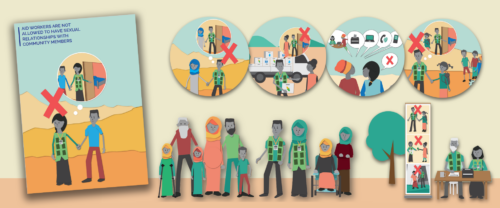Resource
Community Based Safeguarding Visual Toolkit
The community based safeguarding visual toolkit is an adaptable toolkit designed to assist humanitarian and development agencies communicate key safeguarding messages derived from the (IASC) Six Core Principles Relating to Sexual Exploitation and Abuse to the communities in which they and their partners work, helping to break down barriers of language, literacy and accessibility. The ultimate goal for this toolkit is to support communities in realizing their rights in preventing sexual exploitation, abuse and harassment by promoting a ‘speak up’ culture.
Please take the time to read the user information guide, which provides background information on the development of the toolkit, how it can be used and adapted to suit a wide range of needs, as well as a technical guide. Please note that the toolkit has been released in English, however this will be followed by an increasing number of languages, with support from Translators Without Borders.
To access the toolkit, please click on the name of the resource. On the landing page, you will see all of the components of the toolkit linked. Please take some time to go through the links to determine what best fits your needs as an organization.
March 3, 2021
